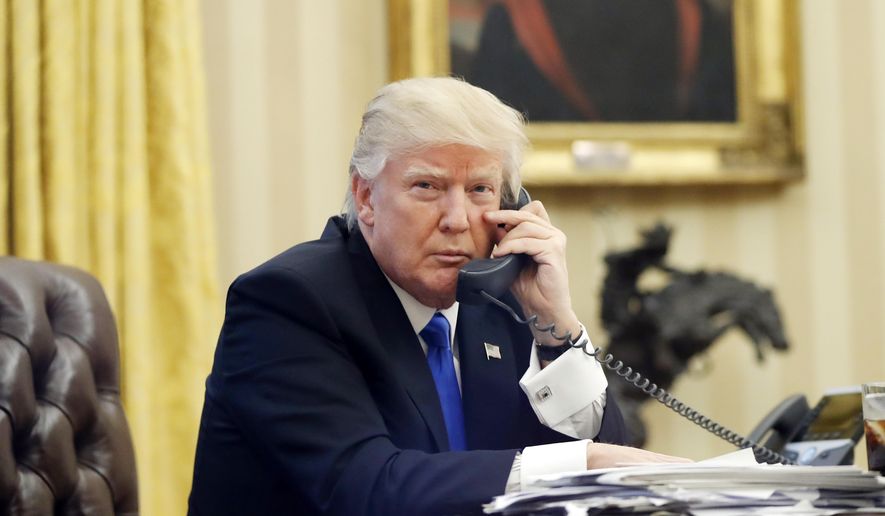OPINION:
The mainstream media erupted Wednesday night after a Washington Post report said President Trump had a heated exchange with Australian Prime Minister Malcolm Turnbull.
“This was the worst call by far,” The Post quoted an anonymous White House source, saying Mr. Trump “badgered and bragged” to the prime minister, then abruptly hung up on him.
The New York Times picked up on the story, warning that a U.S.-Australia rift is possible after Mr. Trump’s call, and The Atlantic dubbed it Mr. Trump’s “blunder down under.”
The theatrics made for good copy — and even better, proved what many in the mainstream media believe, that Mr. Trump doesn’t have the right temperament to be commander in chief. But the stories totally missed what the average American cares about — that, by hanging up on Mr. Turnbull, Mr. Trump was standing up for them.
The real news was what Mr. Turnbull and Mr. Trump’s discussion was about — a deal that former President Barack Obama made in November to resettle 1,250 refugees from Australia to the U.S. These are refugees who fled from their countries (mostly from Afghanistan and Iraq) to Australia, that Australia wants nothing to do with.
Here’s the history:
In 2001, Australia came under international fire after it refused to resettle 450 refugees, mainly from Afghanistan. Caving to international pressure, Australia set up offshoring processing centers on the Pacific islands of Nauru and Manus in Papua New Guinea to detain them, rather than bringing the refugees to their shore. It was, for them, a compromise.
Many of these detainees stayed on the islands indefinitely, and the conditions there were inhumane. Last year, The Guardian reported numerous cases of physical and sexual abuse at the centers, and protests erupted for the Australian government to shut them down, which it agreed to do.
But here’s the kicker: although they agreed to shut down the detention centers, the Australian government still didn’t want the refugees to resettle on its land. Australian Immigration Minister Peter Dutton said flatly that the 854 men living at the Manus Island detention center wouldn’t be resettled in Australia.
This is where good ol’ President Obama came in, agreeing to help lift their burden and resettle the refugees in America. Why? I don’t know. Worst case, to purposely throw a wrench in Mr. Trump’s agenda. The agreement was made in November, after all. The best case was because all other options were exhausted and it was the humanitarian answer.
Still, I can’t help but ask (and so, too, will millions of Americans), why is Australia off the hook? For Australia chose to set up these centers and then not to take care of them. Then, once these centers were exposed for what they were, rather than cleaning them up or accepting more refugees, Australia decided to ask the U.S. for help.
And what does the U.S. get in return, other than an Australian-made problem that undoubtedly will cost us money and jeopardize our national security?
I don’t know. It’s certainly worth evaluating. And that’s exactly what Mr. Trump is doing.
“Every decision on trade, on taxes, on immigration, on foreign affairs will be made to benefit American workers and American families,” Mr. Trump said in his inauguration speech.
Just like Mr. Turnbull said he was looking out for Australian interests in the U.S. refugee deal, so is Mr. Trump on behalf of Americans. It’s refreshing in many ways: a president who puts Americans — not his globalist ideology — first.
So, in Middle America, this dust-up between Mr. Trump and Mr. Turnbull will be viewed positively, a case of Mr. Trump keeping his word despite ruffling a few feathers. No one really believes a phone call will erupt in war between the two allies.
But for the elitists in Washington and New York, the takeaway is obviously something very different.
They — again — are missing the real story.




Please read our comment policy before commenting.